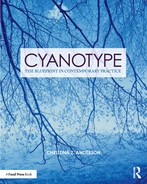
Figure P.3. Seneca, cyanotype over palladium on Arches Platine, 12″ × 12″ © Christina Z. Anderson 2015

Figure P.4. Te Anau, cyanotype over palladium on Arches Platine, 17¾″ × 11¾″ © Christina Z. Anderson 2015
Over the last two decades I have been deeply involved in alternative process photography, a natural progression from a background in painting. In the beginning I was the proverbial kid in a candy shop, dabbling with abandon in this process or that process. In time, my processes of choice narrowed down to a select few: gum/casein bichromate, salted paper, mordançage, chemigram/chromo, and cyanotype, the latter most often in combination with platinum or gum. I have written extensively about these processes in five books to date. It was time to delve more deeply into the cyanotype process and give it as much attention as I have given to gum bichromate and salted paper.
Cyanotype is deceptively simple. Two key ingredients can be mixed in many different proportions and still produce an acceptable print. Perhaps because of its simplicity it has earned a less precious reputation than other more complex alternative processes. Historically it is often described as a process for the amateur photographer. The purpose of this book is to showcase cyanotype’s complexity. It is one thing to make an acceptable cyanotype print. It is another to make an exquisite cyanotype print.

Figure P.5. Wanaka, cyanotype over palladium on Arches Platine, 18″ × 12″ © Christina Z. Anderson 2015
The biggest challenge to writing about cyanotype is having confidence that I may be able to add to the sum knowledge about cyanotype that already exists in print. It wasn’t until I recorded data from testing 136 papers and printing 1088 step wedges that I realized I actually had something to bring to the table.
I am not a scientist, nor am I a chemist. I am an artist first and foremost, and a professor who has taught for almost twenty years in a four-year college photography program. This has allowed me a unique perspective: how to share these processes in a user-friendly, unintimidating way which ultimately results in advanced practice made evident in technically and conceptually strong student final projects. A side benefit to teaching at the college level is having a class of sixteen prove you right—or wrong! It’s equivalent to having a lab with sixteen personal assistants.
When I began research for this book, I corresponded with Sam Wang (South Carolina) and John Jackson (Tennessee) about our findings. Sam was my graduate school professor at Clemson University, alt process printer for decades longer than most of us, and now friend and fellow kudzu-hunter. John Jackson is an avid photographer and alt process printer who does a lot of densitometry work to quantify process information for the purpose of fitting a process to analog film negatives.
Soon Sandy King (South Carolina) joined the fray. Sandy King also taught at Clemson, and has expertise in multiple processes, carbon transfer being his first love. For over a year the four of us independently tested variables that were in the cyanotype “canon.” Each one of us brought certain strengths (and equipment) to the testing, at the very least our vastly different climates from the cold, dry Northwest to the warm, humid Southeast. If all four of us agreed on certain results, it was easy to write with confidence. If there were discrepancies in our findings, then the adage your results may vary (YRMV) applied. This part of writing was sometimes frustrating, but always rewarding. I thank these men for their insights and traveling this journey with me.

Figure P.6. Self, Havana, Cuba, new cyanotype on Arches Platine, 10″ × 7.75” © Christina Z. Anderson 2018
Two chemists who have been my “rocks” when I needed consultation are Dr. Mike Ware and Dr. Alberto Novo. Both have researched photographic chemistry extensively as well as being practicing artists in their own right. When I am stumped, I ask them for help which they have given freely. We in the alt pro movement are indebted to their research.
I thank all the artists who took the time to send work and answer questions for the mere gift of seeing their work in print. Without them this book means nothing.
I thank the editor Sheni Kruger and the assistant editor Sarah Pickles. These two women are nothing short of amazing, professionals and experts in their field. I thank Carolyn Jenkins, also, personal editor and friend, who has now patiently read and reread five of my books as my very first line of defense before Routledge even sees my draft. Sophie Cox, the final proofreader, was beyond awesome to spot every misplaced jot and tittle.
Finally I thank my husband Tom Anderson who has been through this book writing business now six times with me, along with my children and grandchildren, who have learned to be quiet when I sit in my Stressless™ chair, writing for hours and days on end.
Christina Z. Anderson
christinaZanderson.com
